BIOS is a small application “sewn” into the motherboard that sets up several important parameters. You need to use it very carefully; otherwise, you risk turning your PC or laptop into a “brick.” To avoid this, we suggest you read our material. How to set up BIOS on a computer
How to enter BIOS
To enter the BIOS, you need to reboot the computer and press the specified key when the motherboard splash screen appears. These are often the Delete or F2 buttons, although different manufacturers may use other options.
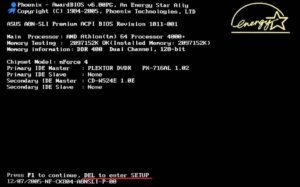
After that, the program will open with many tabs and sections. Their number also varies, but the standard layout looks like this:
- Main;
- Advanced;
- Power;
- Boot;
- Boot Setting Configuration;
- Tools;
- Exit.
Main Section
By default, the BIOS opens in this section. Here, you can adjust the date and time, set the parameters of the hard drive and connected drives, and view information about the system. “Please remember the following text: ‘To make changes.'” Press Enter in the desired place, use the arrows to select the appropriate settings, and confirm the selection with the same Enter button.

As for the parameters of the storage devices, for comfortable operation of the system, it is recommended to set them as follows:
- LBA Large Mode — Auto;
- Block (Multi-Sector Transfer) — Auto;
- PIO Mode—Auto;
- DMA Mode — Auto;
- 32 Bit Transfer — Enabled;
- Hard Disk Write Protect — Disabled;
- SMART Monitoring — Auto;
- Storage Configuration – leave as is;
- SATA Detect Time out — leave as it was;
- Configure SATA as — set to AHCI.
The System Information tab contains information about the BIOS version, firmware creation date, processor, installed RAM size, and available RAM size.
Advanced Section
The System Information tab contains information about the BIOS version, firmware creation date, processor, installed RAM size, and available RAM size.
- AI Overclocking — processor overclocking;
- DRAM Frequency — changing the clock frequency of the memory module bus;
- Memory Voltage — manual change of voltage on memory modules;
- NB Voltage – the same, but on the chipset.
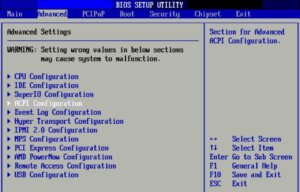
It is not recommended that changes be made in this section without special needs and prior preparation, as there is a high chance of harming the computer. USB ports are activated in the USB Configuration tab, and the maximum data transfer rate is high! Here is the rewritten and corrected text:How to set up BIOS on a computer
“The meeting time is set.” Please remember the following text:
Power Section
Here, you edit the computer’s power parameters. It is best to set all the characteristics as follows:
- Suspend Mode — Auto;
- ACPI APIC — Enabled;
- ACPI 2.0 — Disabled;
- APM Configuration – leave as is.
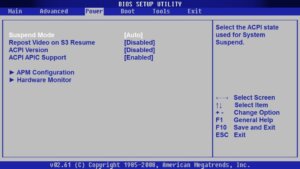
Boot Section
This section is designed to configure the computer boot and consists of the following items:
- Boot Device Priority — setting the boot order of storage devices. It should be changed only in extreme cases, for example, during the installation of Windows;
- Hard Disk Drivers — select the disk from which the operating system will be loaded. Only needed if the computer has several hard drives installed.
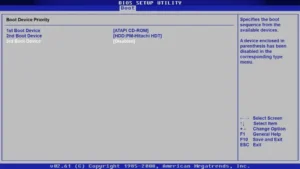
The Boot Setting Configuration tab includes several settings:
- Quick Boot — testing hardware during startup. If activated, Windows will boot faster, but the user will not be able to see errors;
- Full Screen Logo – enables or disables the screensaver during system boot;
- Add On ROM Display Mode – specifies the sequence in which data about devices connected via boards is displayed;
- Bootup Num-Lock – Activates or deactivates the NumLock button;
- Wait For «F1» If Error — when an error occurs, the F1 button is forced to be pressed;
- Hit “DEL” Message Display – During boot, the button to enter the BIOS is indicated.
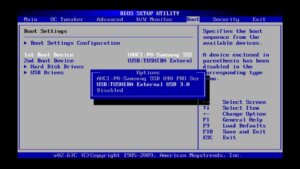
In the Security Setting item, two parameters open:
- Supervisor Password — set a password to enter the BIOS with the ability to change any settings;
- User Password — set a password to enter the BIOS with the ability to view the specified settings.
Tools section
The Tools section is required to update the BIOS from a floppy disk or flash drive.

Exit Section
This section is used to exit the BIOS settings. There are four modes:
- Exit and Save Changes — exit and save all changes;
- Exit and Discard Changes — exit without saving changes;
- Load Setup Defaults – sets default parameters;
- Discard Changes – cancel all changes.

To exit directly from BIOS from any section, press the Esc key. If you want to exit after saving the changes, press F10. How to set up BIOS on a computer
Also Read: How to enable Secure Boot in BIOS
Also Read: How to enter BIOS on a laptop and computer


